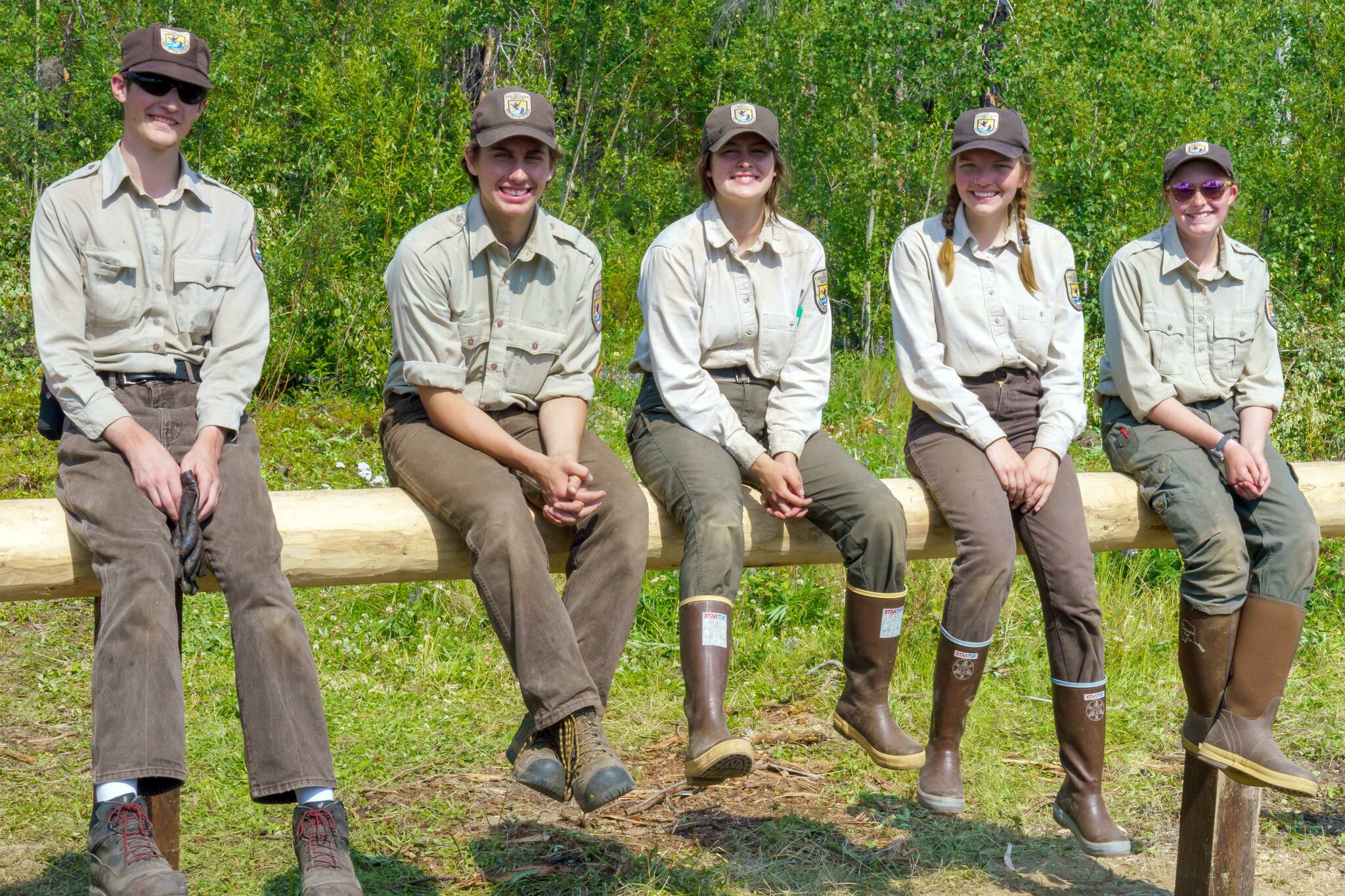By Christa Kennedy
Peninsula Clarion Contributor
The Youth Conservation Corps has been an integral part of Kenai National Wildlife Refuge summer staff for many summers. After a break in 2020 due to the pandemic, the YCC was back in force in the summer of 2021.
Local youth between the ages of 15 and 18 comprise the YCC crews. They typically spend eight weeks working and learning new skills alongside refuge staff. This year’s crew started in early June and spent the next eight weeks developing new skills and having a whole lot of fun in the process.
In late May 2014, the Funny River Fire started just off Funny River Road within the Kenai National Wildlife Refuge. Within the first 18 or so hours, the fire had pushed its way from Funny River to the northwest corner of Tustumena Lake.
On the northwest shoreline of Tustumena Lake sits Nurses Cabin. Unfortunately, by the time fire crews from the refuge could get to Nurses Cabin, the fire had overrun it and pushed through the area.
However, upon arrival, crews discovered that because of “firewising” done by previous refuge employees, a defensible space was created around the cabin, and the cabin and its outbuildings had survived the fire as it moved through the area.
Nurses Cabin is located very close to the end of the Doc Pollard Horse Trail, which runs 6.1 miles from Kasilof to Tustumena Lake. Many folks enjoy taking their horses down the Pollard Horse Trail to either Nurses Cabin or beyond the trail’s end farther down the Lake.
Unfortunately, in 2014 when the fire rolled through, it eliminated or compromised most of the white spruce and other larger trees around Nurses Cabin. These trees were great options for those riding in by horseback to tie their horses to the high line during their time at Nurses Cabin.
In the years since the fire, the only decent-size trees still around and not affected by the fire have been taking a beating from tying horses to them. Those trees are one of the only defenses between the bluff and Tustumena Lake.
A handful of horse users mentioned this issue to the refuge staff over this past winter. A thinking and planning process began to minimize the impact of horses on the environment and save the trees. As a result, the group came up with the idea of building a permanent structure.
After getting some guidance from some local horse folks, the decision was to build a few hitching posts out at the cabin. The project had many different stages that made it come together.
We used both native and dimensional materials for the project. Due to the lack of trees at the Nurses Cabin and surrounding area, we cut down spruce trees at refuge headquarters for the cross pieces of the hitching posts.
To ensure longevity, the posts themselves consisted of 6-by-6 treated pieces of wood. Once all the material was harvested, peeled and purchased, then the real work began.
Along with the Cabins Manager Dan Saxton and many other helpers from the Visitor Services department, the main workforce behind the project was our Youth Conservation Corps Crew.
The five teenagers started the project by clearing the area where we would put the four hitching posts spanning roughly 40 feet. Once cleared of all trees and brush that could injure the horses, we started figuring out where and how to put the posts into the ground.
The project started with the adults leading and teaching the YCC. An adult oversaw the hole digging for the 6-by-6 posts, placing them and getting the posts set. A gas-powered auger was used to help with the process because eight post holes needed to be dug 3 to 4 feet deep and 6 inches wide.
The auger was meant to be a two-person auger, and at first, it seemed a bit intimidating for the YCCers to use. However, all quickly got into the routine and were auguring holes, setting the posts, using the levels and, finally, adding and locking the poles in place.
My proudest moment on this project came as we began to drill hole number six for the posts. Four YCCers were working together and were yelling at me to pull the start cord on the auger so they could drill the hole themselves without any adults. From that point on, with the hole digging and post setting, the group of YCCers had taken charge and would tell me what needed to be done.
While the hole digging was taking place, a very similar theme was occurring with Saxton and the spruce cross pieces. Saxton started by working with a few YCCers and showing them how to cut the notches on the cross pieces to fit them on top of the 6-by-6 posts.
By the end of the project, with the last little bit of notching, Saxton was able to take a step back and watch the YCCers do the job themselves.
It is often said that YCC is about teaching life lessons while working within the refuge and being on spike camps. For us, it is also watching the crew grow throughout their eight weeks at the refuge. The moments when one YCCer teaches another YCCer a new skill they have just learned is what makes YCC such a special and rewarding program for all at the refuge.
Christa Kennedy is the Trails Volunteer Coordinator for the Kenai National Wildlife Refuge.


